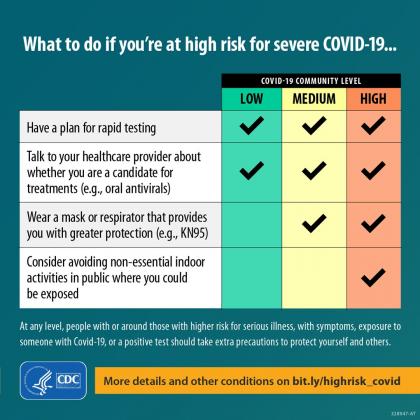After hosting approximately 8,000 potentially life-saving infusions for Southeast Texans who suffered COVID-19 symptoms, the area’s Regional Infusion Center closed March 11 after “serving its purpose.”
Jefferson County Emergency Management Director Mike White said the infusion center’s necessity had dwindled to near nonexistence in its final weeks, saying officials made the decision to close once the facility started serving “one or two” patients a day. Area cases have also declined in recent weeks, with the Beaumont Public Health Department reporting an average of approximately seven daily confirmations throughout the first half of March.
In August 2021, the infusion center began treating those on area hospitals’ backlogged list of more than 300 patients scheduled for treatment two days ahead of schedule, according to White. The center treated 304 patients in its first two days of operation, and approximately 440 patients were added to the waitlist over the next two days. At the height of its use, the regional infusion center completed between 150 and 200 infusions each day.
Residents who received the monoclonal antibody treatment typically avoided hospitalization, as well as severe COVID-19 symptoms, according to White and local doctors and health care professionals.
“We slowly wound down on it so that the hospitals would be prepared to take over the mission of infusions,” White told The Examiner. “And they are now.
“That was the whole purpose of the infusion center in the beginning – it was to take the load off the hospitals until they were able to take it back over. It was a very smooth transition. We went from being, actually, No. 1 in the state in hospitalization rate, to one of the best in the state. And that’s pretty much directly attributed to the infusion center.”
COVID coverage
In a report released Monday, March 14, the Centers for Disease Control and Prevention (CDC) maintained its recommendation to residents to get vaccinated – even those who have contracted COVID-19 in the past.
“No currently available test can reliably determine if you are protected after being infected with the virus that causes COVID-19,” according to the CDC. “Getting a COVID-19 vaccine after you recover from infection with the virus that causes COVID-19 provides added protection to your immune system. People who already had COVID-19 and do not get vaccinated after their recovery are more likely to get COVID-19 again than those who get vaccinated after their recovery.”
Those who currently have COVID-19 should wait to get a vaccine until symptoms are gone, and until they are done with their isolation period. Those who aren’t vaccinated and were exposed to someone with COVID-19 should wait until their quarantine is over to avoid getting others sick while getting vaccinated.
Test soon and treat early
For people at high risk of severe illness, the FDA issued an emergency use authorization for a number of treatments for COVID-19, including monoclonal antibody treatments and oral antiviral medications.
Last December, the FDA issued an emergency use authorizations for Pfizer’s Paxlovid (nirmatrelvir tablets and ritonavir tablets, co-packaged for oral use) for the treatment of mild-to-moderate COVID symptoms in adults and pediatric patients, who are at high risk for progression to severe COVID-19, including hospitalization or death. Paxlovid is now available by prescription only and, according to the FDA, should be initiated as soon as possible after diagnosis of COVID-19 and within five days of symptom onset.


